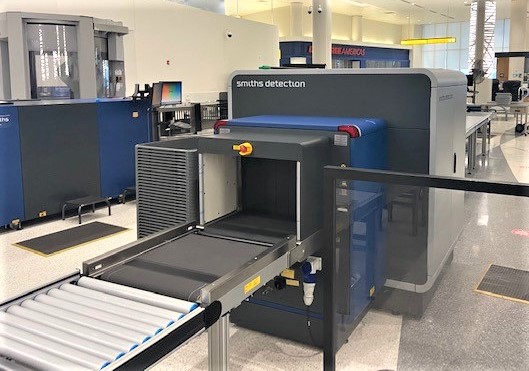 The Transportation Security Administration has installed several new computed tomography (CT) scanners at Philadelphia International Airport checkpoints. (TSA photo)
The Transportation Security Administration has installed several new computed tomography (CT) scanners at Philadelphia International Airport checkpoints. (TSA photo)
PHILADELPHIA — Five new state-of-the-art advanced technology computed tomography checkpoint scanners (CT) that provide 3-D imaging have been installed and are in use at Transportation Security Administration checkpoints at Philadelphia International Airport.
“The new technology assists us in addressing new and emerging threats, allowing for better detection of those potential items by providing three-dimensional, high resolution X-ray images,” said Gerardo Spero, TSA’s Federal Security Director for the airport. “It offers us critical explosives detection capabilities at the checkpoint and enhances the TSA officer’s ability in determining whether an item inside a carry-on bag is a possible threat to aviation security. This technology is already in use in our screening of checked baggage. We’re pleased that it is now available at several of our checkpoints to screen carry-on bags.”
There are two units at the A/E Terminal checkpoint, two at the D/E Terminal checkpoint and one at Terminal B.
The system applies sophisticated algorithms for the detection of explosives by creating a 3-D image that can be viewed and rotated on three axes for thorough visual image analysis by a TSA officer. If a bag requires further screening, TSA officers will inspect it to ensure that a threat item is not contained inside.
The 3-D imagery enables TSA officers to manipulate the image on screen to get a better view of a bag’s contents and often enables the officers to clear items without having to open a carry-on bag. Additionally, this state-of-the art technology provides an improved security threat detection capability at the checkpoint, while reducing the need for pulling aside a bag to be opened, thus reducing a touchpoint during the pandemic.
This equipment is similar to what is used to scan checked baggage for explosive devices, and has been “sized” to fit at checkpoints to create such a clear image of a bag’s contents that the system can automatically detect explosives, including liquids, by shooting hundreds of images with an X-ray camera spinning around the conveyor belt to provide TSA officers with the three-dimensional views of the contents of a carry-on bag.
Checkpoint CT technology should result in fewer bag checks. Passengers using this new scanner at Philadelphia International Airport will be permitted to leave laptops and other electronic devices in their carry-on bags.
For the most up-to-date information about CT and to view a video of the X-ray monitor, visit TSA’s Computed Tomography web page.
